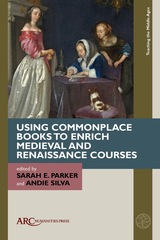5 books about Hampshire

The Economic and Social History of an English Village (Crawley, Hampshire), A.D. 909-1928
Norman Scott Brien Gras and Ethel Culbert Gras
Harvard University Press

The Victoria History of Hampshire
Cliddesden, Hatch and Farleigh Wallop
Alison Deveson and Sue Lane
University of London Press, 2018
Tracing the history of two small, closely-linked parishes which lie to the south of Basingstoke on the edge of the chalk downlands, and a third parish, Hatch (abandoned towards the end of the 14th century and has formed part of both of the others), Cliddesden, Hatch and Farleigh Wallop is the latest publication from the Victoria County History of Hampshire project. Each settlement has a common manorial descent from the 15th century onwards and they were managed as components of a single estate under the lordship of the Wallop family from their seat at Farleigh House. This volume discusses the manorial owners and the development of the estate, and also includes much more about the lives and activities of ordinary people living and working in the settlements. Religious and social history of the area is covered and the survival of an unusually full set of records has enabled the history of the school to be told in detail. This, coupled with lively tales of social activities, provides a fascinating picture of rural life as it was and as it has become in the 21st century – largely a home for commuters, with Hatch absorbed into an ever-growing Basingstoke and farming undertaken from one centre across nearly all the land. Published by the Institute of Historical Research at the University of London, this is the fourth volume from the Victoria County History of Hampshire following Mapledurwell, Steventon and Basingstoke: a Medieval Town c.1000–c.1600. Each title provides a scholarly account of individual villages and towns of interest to their inhabitants, those in the wider area and to those beyond Hampshire itself.
[more]

The Victoria History of Hampshire
Mapledurwell
John Hare, Jean Morrin, and Stan Waight
University of London Press, 2015
Eastnor is the first parish history to be produced by the Trust for the Victoria County History of Herefordshire, and complements some of the work on Ledbury undertaken for the Heritage Lottery-funded England’s Past for Everyone project between 2005 and 2009. In its expanded treatment of the parish history, emphasising the economy and society of the parish as well as landownership and religious life, Eastnor is modelled on the first individual VCH parish history to be published, that of Mapledurwell, Hampshire, in 2012. Eastnor lies at the southern end of the Malvern Hills and has always been an agricultural parish. In the 19th and 20th centuries it was dominated by the Castle, built between 1812 and 1820, and by its owners, the Somers Cocks family, Barons and later Earls Somers, and their descendants. The Somers Cocks owned most of the land in the parish and employed many of its inhabitants, and this ownership saved the parish and its many timber-framed houses from modern development. In earlier centuries the pattern of land ownership was very different; at the time of Domesday Book the bishop of Hereford’s manor covered the whole parish. From the later Middle Ages the owners of small freeholds extended their holdings, so that in the 16th and 17th centuries several gentry families owned small estates in the parish. In the course of the 18th century these were bought up by the Somers Cocks family. This book explores, using the extensive archival records, how these changes in land ownership affected the inhabitants of the parish and the way in which the land was farmed.
[more]

The Victoria History of Hampshire
Medieval Basingstoke
John Hare
University of London Press, 2017
Basingstoke is frequently seen as a very modern town, the product of the last decades of the 20th century. In reality it has a long, rich and prosperous history. From its beginnings c.1000 it became a significant market centre for the area around, and a place on the route to London from the west. By 1500 it was among the top 60 towns in England by wealth and taxpayers, and the centre of a major industrial area, whose manufactured cloths formed part of international patterns of trade. Moreover, it is well documented particularly for the 15th and 16th century, when it was at its peak, and should provide a useful addition to the limited number of studies of small medieval towns. Much of the old town has been swept away by the shopping centre, but something of the medieval footprint survives in its street beyond this, in a few surviving buildings and above all in its magnificent church. This book examines these features as well as the families, whether outsiders or locals, who made the most of the new thriving economic conditions, and whose dynamism helped create the town’s expansion.
[more]

The Victoria History of Hampshire
Steventon
Jean Morrin
University of London Press, 2016
READERS
Browse our collection.
PUBLISHERS
See BiblioVault's publisher services.
STUDENT SERVICES
Files for college accessibility offices.
UChicago Accessibility Resources
home | accessibility | search | about | contact us
BiblioVault ® 2001 - 2024
The University of Chicago Press









